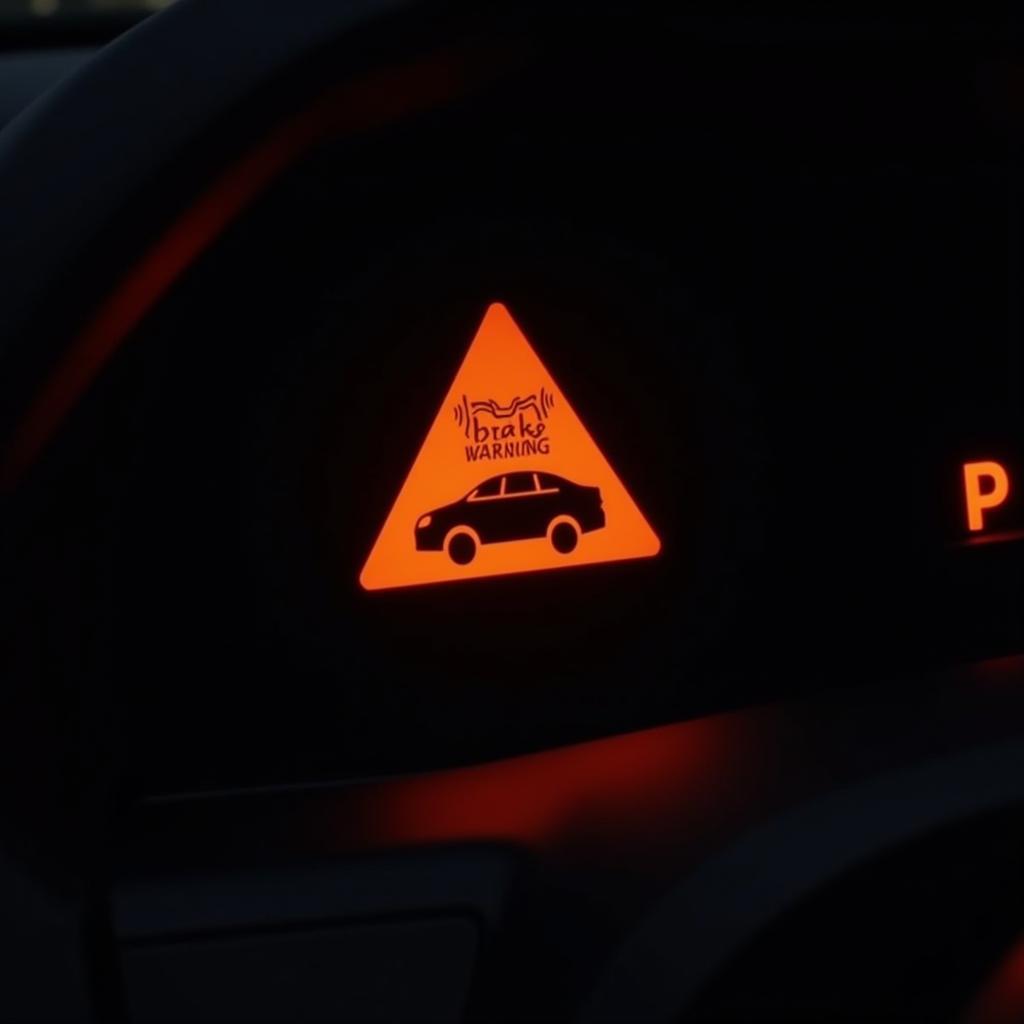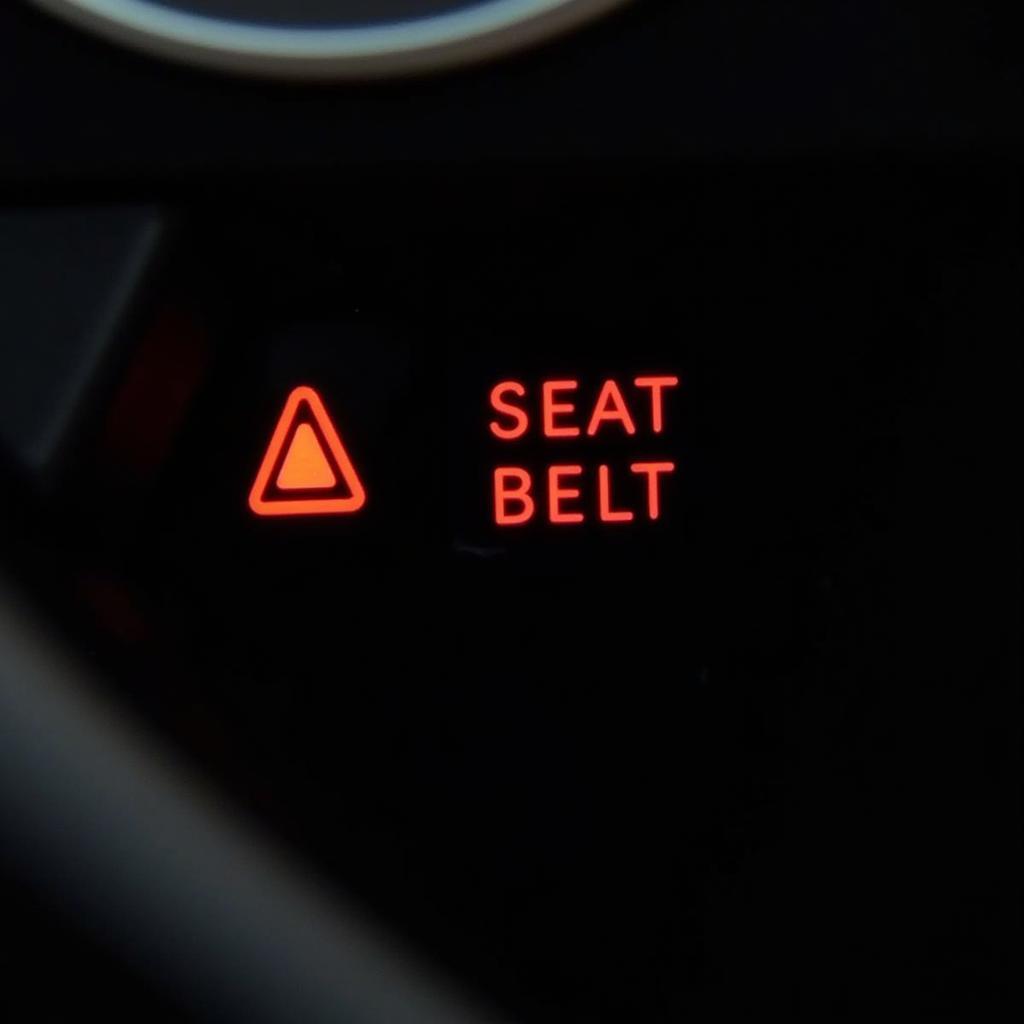Seeing a forward brake warning light illuminate on your car’s dashboard can be unsettling. This warning, often accompanied by a message like “Forward Brake System,” “Pre-Collision System,” or similar alerts, indicates an issue with your vehicle’s advanced driver-assistance system designed to prevent front-end collisions. While this system generally enhances safety, it can be frustrating when it malfunctions. This comprehensive guide will explore the common causes of a forward brake warning, what to do when it appears, and how remote diagnostics can help get you back on the road safely.
 Forward Brake Warning Light on Dashboard
Forward Brake Warning Light on Dashboard
Understanding Your Car’s Forward Brake System
Modern vehicles are increasingly equipped with advanced driver-assistance systems (ADAS), and the forward brake system is a crucial component. This system uses sensors, typically radar or cameras, mounted on the front of your vehicle to monitor the distance to the car in front of you. If the system detects an imminent collision risk, it will issue a forward brake warning, often accompanied by an audible alarm, to alert you and prompt braking. In some cases, the system might even automatically apply the brakes if you don’t react quickly enough.
Common Causes of a Forward Brake Warning
There are several reasons why your forward brake warning light might turn on:
- Sensor Obstructions: Dirt, debris, snow, or ice can obstruct the sensors, preventing them from accurately detecting objects in front of you.
- Sensor Malfunction: Like any electrical component, the sensors themselves can malfunction due to wear and tear, water damage, or other factors.
- Software Glitches: The software controlling the forward brake system can sometimes experience glitches that cause false warnings.
- Misaligned Sensors: If the sensors are misaligned due to a minor accident or other impacts, they might not function correctly.
- Brake System Issues: While less common, problems with your traditional braking system, such as low brake fluid or worn brake pads, can also trigger the forward brake warning.
What to Do When the Forward Brake Warning Appears
- Stay Calm and Assess the Situation: When the warning light comes on, don’t panic. Check your surroundings and ensure there’s nothing obstructing your path.
- Check Your Traditional Brakes: While the forward brake warning typically points to the ADAS, it’s crucial to ensure your regular brakes are functioning correctly. Test your brakes gently to check for any unusual noises or sensations.
- Consult Your Owner’s Manual: Your owner’s manual provides valuable information specific to your vehicle model, including how to reset the forward brake warning and what to do if it persists.
- Schedule a Diagnostic Check: If the warning persists or you suspect a system malfunction, it’s essential to schedule a diagnostic check with a qualified mechanic specializing in automotive electronics.
The Advantages of Remote Diagnostics
Remote diagnostics offers a convenient and efficient way to diagnose and potentially resolve the underlying cause of a forward brake warning. Here’s how it works:
- Connect Your Vehicle: Using a specialized device that plugs into your car’s OBD-II port, your car’s data is transmitted to a remote diagnostic platform.
- Expert Analysis: Skilled technicians can access your vehicle’s data remotely, analyze the error codes, and identify the root cause of the forward brake warning.
- Software Updates and Programming: In many cases, a simple software update or reprogramming can resolve the issue. Remote diagnostics allows technicians to perform these updates remotely without you needing to visit a repair shop.
Benefits of Remote Diagnostic Services
- Convenience: Diagnose and potentially fix your car’s issue from the comfort of your home or office, without the hassle of visiting a mechanic.
- Speed: Receive a diagnosis and potential solutions much faster compared to traditional repair shop visits.
- Cost-Effectiveness: Remote diagnostics can often save you money on unnecessary trips to the mechanic and potentially avoid costly repairs.
- Expert Support: Access to experienced technicians specializing in automotive electronics and remote diagnostics.
Conclusion
A forward brake warning on your car dash, while concerning, doesn’t necessarily signal a major problem. By understanding the system, potential causes, and the benefits of remote diagnostics, you can address the issue proactively and ensure your vehicle’s safety features are functioning correctly. If the warning persists, remember to consult a qualified mechanic for a thorough inspection.
Don’t let a forward brake warning leave you stranded. Explore the convenience and efficiency of remote diagnostics for a swift and reliable solution.
FAQs
-
Can I still drive my car with the forward brake warning on?
While you can technically still drive, it’s crucial to exercise extreme caution, as the system might not function as intended. It’s best to schedule a diagnostic check as soon as possible. -
Is the forward brake system the same as ABS?
No, the forward brake system is a separate ADAS feature that works in conjunction with your traditional braking system, including ABS. -
How much does it cost to fix a forward brake system problem?
The repair cost varies depending on the underlying issue. Sensor replacements can range from [Price Range], while software updates might cost [Price Range]. -
Can I reset the forward brake warning myself?
You might be able to reset the warning by referring to your owner’s manual. However, it’s essential to address the root cause to prevent the warning from reappearing. -
How often should I have my car’s ADAS systems checked?
It’s generally recommended to have your car’s ADAS, including the forward brake system, inspected annually or as part of your regular maintenance schedule.


